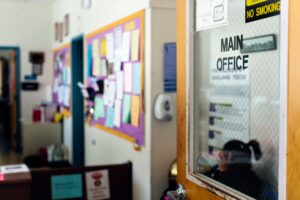August 31, 2018
California lawmakers pass limits on restraint and seclusion in schools
The bill would also reinstate requirements for schools to collect and report data on student restraint, and ban certain restraint techniques.

Black teachers: How to recruit them and make them stay

Lessons in higher education: What California can learn

Keeping California public university options open

Superintendents: Well-paid and walking away

The debt to degree connection

College in prison: How earning a degree can lead to a new life